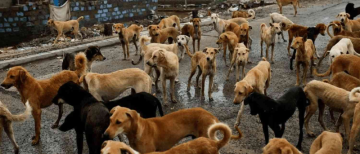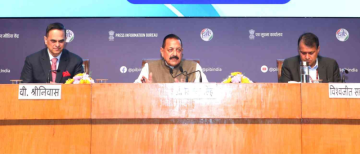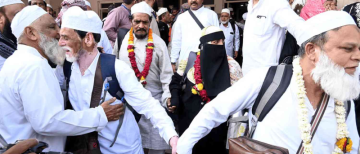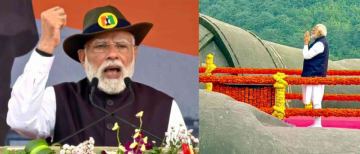On the evening of November 10, 2025, a powerful explosion tore through a Hyundai i20 near the Red Fort metro station in Old Delhi, killing people, injuring dozens and sending shockwaves—literally—across the crowded historic quarter. Within hours investigators were racing to connect the blast to a separate, dramatic counter-terror seizure in Faridabad: hundreds of kilograms of suspected explosives, rifles, timers and other bomb-making material recovered from a rented house. Over the next 48 hours officials pieced together a worrying picture of a “white-collar terror module” with ties into Jammu & Kashmir — and a suspected suicide bomber from Pulwama. Below is a consolidated, chronological and sourced account of what is known so far, how the two incidents appear to link, and what questions remain.

What happened in Delhi (the explosion)
When & where
The blast occurred at about 6:52–6:55 pm on November 10, 2025, at a traffic signal outside Gate 1 of the Lal Quila (Red Fort) metro station in Old Delhi, a busy, tourist-heavy area. The car involved was a Hyundai i20. Multiple nearby vehicles and e-rickshaws were set ablaze; the fire was brought under control by firefighters within roughly 30–40 minutes of the first emergency calls.
Casualties and damage
Early reports varied slightly as officials continued rescue operations, but national outlets later published consolidated casualty counts. Multiple credible sources reported at least eight to nine people killed and around 20–24 injured, with many victims rushed to LNJP Hospital. The force of the blast shattered windows and damaged vehicles and shops several hundred metres away. Videos and eyewitness accounts described scenes of panic, heavy smoke and body parts in the wreckage — an indication of the blast’s intensity.
Immediate response
Delhi Police, the Fire Service, forensic teams, the National Investigation Agency (NIA) and National Security Guard (NSG) units were deployed to the scene. The Prime Minister and Union Home Minister were briefed; authorities ordered high alert and tightened security at airports, railway stations and other sensitive locations across multiple states. Metro services continued to run, though access to specific Red Fort metro gates was restricted.
What investigators initially found at the site
Forensic teams and the NIA examined the wreckage for explosive residues, detonators and other clues. Officials reported finding detonators and traces of ammonium nitrate at the blast scene — the same chemical that was seized earlier that day in Faridabad — suggesting a possible link between the two events. Investigators also recovered body parts inside the car and noted burn injuries among many victims; notably, early medical reports did not emphasize pellet (shrapnel) injuries, which provided investigators tentative clues about the blast’s nature.
#WATCH | Haryana | 360 kg of possible ammonium nitrate, assault rifle and other ammunition recovered by J&K Police during investigation in Faridabad.
Visuals from Fatehpur Taga in Faridabad where a search operation by Haryana Police is underway. This is about 4 km away from the… pic.twitter.com/BJFdJitlwP— ANI (@ANI) November 10, 2025
The Faridabad seizure: what was recovered and how the trail began
How the Faridabad search started
The probe that unearthed the Faridabad cache began days earlier after posters supporting Jaish-e-Mohammed (JeM) appeared in parts of Srinagar. CCTV footage led police to a man (identified in media reports by variations of the name Adil/Rather/Adeel) who was later arrested in Saharanpur on November 6. Interrogation and forensic follow-ups traced links to other doctors and to a rented house in Dhauj village on the outskirts of Faridabad.
What police say they found in Dhauj / Faridabad
Joint searches by Jammu & Kashmir Police, the Intelligence Bureau and Faridabad Police uncovered a major stash of explosive precursors and arms. Media reporting, quoting police sources, lists recovered items including:
-
Approximately 350–360 kg of suspected ammonium nitrate (some reports quote “around 350 kg” or “358 kg” from a single Faridabad address).
-
An AK-47 rifle and a quantity of ammunition.
-
Timers, remote controls, electronic circuits, batteries, wires and components suspected to be used in assembling IEDs.
-
Multiple bags and containers of chemical reagents and a few litres of other chemical solutions.
(Important context on the numbers: several outlets reported initial recoveries of ~350–360 kg from the Dhauj address, while other coverage over the same 24-hour period aggregated larger totals — reporting 2,500–2,900 kg of suspected explosive material recovered across multiple properties in the wider operation. Investigators say the operation spanned several locations as arrests were made and searches widened.)
How dangerous is ammonium nitrate
Ammonium nitrate is a widely manufactured chemical used principally in fertilisers, but when mixed with fuel or other combustible material it is a powerful and cheap explosive ingredient. Historical industrial disasters (Beirut 2020, Tianjin 2015) and terror attacks (Oklahoma City 1995) show it can cause catastrophic devastation when stored or deployed improperly. For that reason investigators treated the Faridabad haul as a potential source for building multiple high-intensity IEDs.
Charges and agencies involved
Cases were registered under the Arms Act, the Explosives Act and the UAPA (Unlawful Activities (Prevention) Act). As the probe widened, the NIA and other central agencies joined the investigation.
Faridabad, Haryana: Commissioner Of Police Satender Kumar Gupta briefs on J&K Police recovering IED-making materials and ammunition during an investigation in Faridabad pic.twitter.com/800wGZ4q7N— IANS (@ians_india) November 10, 2025
The emerging terror module: alleged members and links
Doctors from J&K in the picture
Reporting names several medical professionals who were arrested or detained during coordinated actions. Two names routinely appear in coverage: Dr Muzammil (variously spelled Muzammil Shakeel / Muzammil Ahmad Ganai / Ganai) — the doctor whose rented accommodation was searched in Dhauj and from whom explosives and an AK-47 were recovered — and Adil (variously Adil Rather / Adeel Rather / Adil Ahmad Rahter), the person initially traced from CCTV surveillance of JeM posters in Srinagar and arrested in Saharanpur. Media outlets noted these persons worked in medical colleges/hospitals (Anantnag/Al-Falah) and that some of the institutions involved had ties to cross-border funding or alumni networks, claims investigators were probing further.
“White-collar terror” and alleged radicalisation
Investigators and media described the group as a possible “white-collar” terror module — a cell composed of educated professionals (doctors in this case) allegedly radicalised through encrypted messaging platforms and operating with a degree of disguise and occupational cover. Investigators are probing whether the module had handlers across the border as well as funding routes that enabled the procurement and storage of large quantities of explosive precursors.
#WATCH | Delhi: Multiple casualties have been brought to the LNJP hospital due to the blast near Gate No 1 of Red Fort Metro Station. Several people have been injured in the incident, sources tell ANI
(Visuals from the spot) pic.twitter.com/Utih8Qmq6U— ANI (@ANI) November 10, 2025
The suspected bomber and the handover from Faridabad to Delhi
Who was in the car
Investigators traced the exploded Hyundai i20’s registration and ownership trail and linked the vehicle to Dr Umar (Umar Mohammad/Umar Mohammed) — a 36-year-old doctor from Pulwama who had worked in Jammu & Kashmir medical colleges and at Al-Falah in Faridabad. CCTV footage showed the white i20 parked in the Red Fort parking lot for over three hours and the suspected driver (identified in images and later reporting as Dr Umar) sitting inside for that period before the car drove into traffic and detonated near a signal. Investigators say only one person was inside the vehicle at the time of the explosion.
Possible motive / trigger
Multiple outlets reported investigators believe the blast was triggered after the arrests in Faridabad earlier that day. According to police lines quoted in the press, Dr Umar and his associates were part of the same module; upon learning of the Faridabad arrests, the suspect panicked and the blast was triggered — possibly intentionally by the occupant (a suicide detonation) or accidentally during an attempt to escape. Officials said they were still examining forensic evidence, vehicle data and CCTV to determine whether the explosion was a deliberate suicide attack or the result of mishandling of explosives.
Evidence at the scene consistent with an IED
Forensic teams said detonators and traces of ammonium nitrate were found, and the absence of extensive shrapnel wounds on victims (many had severe burn injuries) was being interpreted in early probes. Police officials stressed that all possibilities were being explored and that conclusive statements would come only after lab analysis by FSL and NSG teams.
#WATCH | Delhi: "I saw the flames from my house and then came down to see what had happened. There was a loud explosion. I live nearby," said local resident Rajdhar Pandey pic.twitter.com/mPVLWdxLPP— ANI (@ANI) November 10, 2025
Timeline (condensed)
-
Oct 27: Posters supporting Jaish-e-Mohammed appear in parts of Srinagar; CCTV points to a suspect later named in reporting as Adil/Adil Rather.
-
Nov 6: Adil is arrested in Saharanpur; police find an assault rifle in a locker in a Kashmir medical college and expand the probe.
-
Nov 10 (morning / day): Jammu & Kashmir Police and Haryana/Faridabad teams arrest Dr Muzammil (Ganai/Shakeel) and search rented premises in Dhauj village, recovering large quantities of ammonium nitrate, timers, an AK-47 and other materials. Reports on aggregate recoveries vary, with initial Faridabad recoveries quoted at ~350–360 kg and later aggregated totals across the operation reported at 2,500–2,900 kg.
-
Nov 10, ~6:52 pm: A Hyundai i20 explodes near the Red Fort metro station; multiple vehicles catch fire, casualties occur and an intense investigation begins. CCTV footage shows the Hyundai parked for hours beforehand; investigators later link it to Dr Umar from Pulwama.
#WATCH | Delhi: Blast near Red Fort Metro Station | Union Home Minister Amit Shah says "This evening, around 7 pm, a blast occurred in a Hyundai i20 car at the Subhash Marg traffic signal near the Red Fort in Delhi. The blast injured some pedestrians and damaged some vehicles.… pic.twitter.com/BfRei3r3tx— ANI (@ANI) November 10, 2025
What this means and what investigators are focused on now
-
Possible single network, multiple crime scenes: Police are treating the Faridabad seizure and the Red Fort blast as part of the same unfolding operation. The presence of ammonium nitrate at both locations and overlapping personnel links have made this the central working hypothesis; forensic confirmation is being awaited.
-
Scope of the threat: If the seized ammonium nitrate and components were to be combined with fuel and arranged into IEDs, they could have produced multiple high-intensity devices with substantial blast radii — which is why the discovery in Faridabad was described by senior officers as a potentially catastrophic breakthrough that prevented worse attacks.
-
“White-collar” radicalisation and online networks: Authorities are probing how medical professionals became radicalised, with investigators pointing to encrypted Telegram channels and other online communities as recruitment and radicalisation vectors. This raises questions about detecting and disrupting non-traditional terror cells embedded in professional networks.
-
Lines of enquiry still open: forensic lab results (FSL), ballistics and residue analysis, vehicle-forensic timelines, ownership transfers of the car, phone/telecom trails, financial flows and cross-border links remain central to reaching definitive conclusions. Until lab evidence is processed and courts receive charge sheets, many details will remain provisional.
#WATCH | Delhi: Blast near Red Fort | "When we saw someone's hand on the road, we were absolutely shocked. I can't explain it in words..." said a local to ANI pic.twitter.com/vmibMbPFUk— ANI (@ANI) November 10, 2025
Human cost and public reaction
The blast occurred in the early evening rush, in a high-footfall area near markets and historic sites. Eyewitnesses described chaos, with shops trembling from the blast and rescue workers scrambling amid heavy smoke. Political leaders, including the Prime Minister and Union Home Minister, publicly expressed condolences and ordered high-level reviews. Several states raised security levels and beefed up patrols at critical infrastructure and crowded public spaces. For the families of the victims and the injured hospitals, long nights of treatment and identification followed — a reminder that the operational and forensic stories are tied to real people and communities.
What we can cautiously say right now
-
The Faridabad seizure and the Red Fort blast are being investigated as linked incidents; evidence so far (seized ammonium nitrate and detonators, overlapping suspect identities and timing) supports that working hypothesis, but forensic confirmation is pending.
-
Media reporting consolidated a harrowing human toll and showed how rapidly law-enforcement coordination across states can unfold when a multi-location threat is suspected.
-
Investigators will be looking for definitive lab results, telecom and financial trails, and any cross-border handler links; public safety measures remain heightened while evidence is examined.
With inputs from agencies
Image Source: Multiple agencies
© Copyright 2025. All Rights Reserved. Powered by Vygr Media.

























